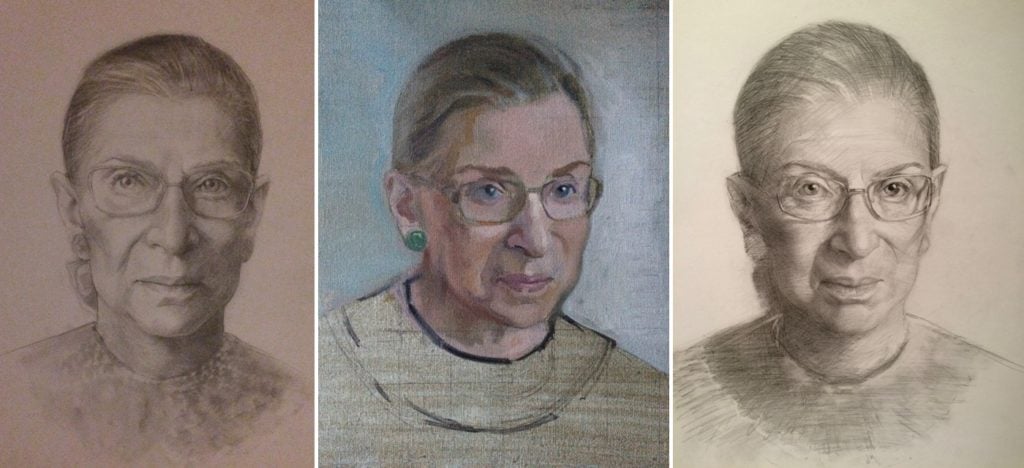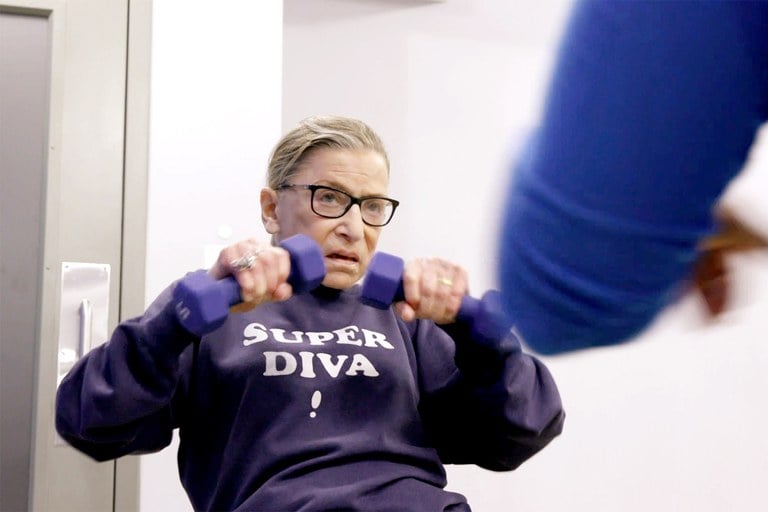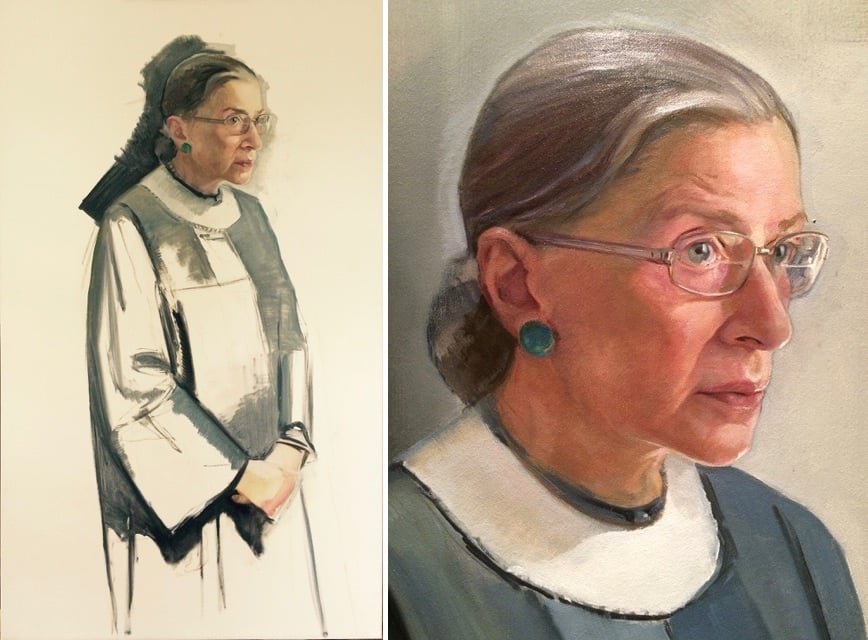Art World
Ruth Bader Ginsburg’s Portraitist on Why Painting ‘This Country’s Tiny Powerhouse’ Is the Highest Honor for an Artist
The justice recently donated artist Constance Beaty's portrait of her to the Brooklyn Museum.

The justice recently donated artist Constance Beaty's portrait of her to the Brooklyn Museum.

Caroline Goldstein

Brooklyn is famously the birthplace of late rapper Biggie Smalls, aka the Notorious B.I.G., but it’s also the birthplace of the the Notorious R.B.G.—aka Supreme Court Justice Ruth Bader Ginsburg. Now, the Brooklyn Museum is helping establish her legacy in the borough by acquiring a portrait of Ginsburg by New York artist Constance P. Beaty, which was donated by Ginsburg herself.
Beaty, who went to school with Ginsburg’s daughter, Jane Ginsburg (an attorney herself), first painted the justice in 2011, for a commission from Columbia’s law school. When that portrait was finished, Ginsburg told Beaty that she’d be at the top of her list when it came time for her official Supreme Court portrait. True to her word, she later gave Beaty the gig.
“There is no higher honor for me as a figurative painter,” she told artnet News in an email, “than to have been asked to portray this country’s tiny powerhouse, Ruth Bader Ginsburg!”
When they discussed how to approach the second portrait, Beaty says that rather than work from the sketches she’d made for the 2011 painting, “the Justice said ‘no,’ she would like this to be a new approach,” Beaty said.

Preparatory sketches of Ruth Bader Ginsburg. Courtesy of Constance Beaty. © Constance P. Beaty.
In preparation, Beaty took informal photographs of Ginsburg at the Glimmerglass Opera Festival, which she visits nearly every summer, as well as in a photo session in one of the court chambers. From those images, she made “obsessive” head studies, preparatory drawings, oil sketches, full-length composition sketches, and, ultimately, the final painting, which focuses solely on the judge’s face. The work’s large scale “allows the viewer to really look into those extraordinary, beautiful, determined eyes, and get a dose of the force of her character, which most people will never have the opportunity to experience in the flesh.”

Still from the documentary RBG, courtesy of Magnolia Pictures.
Ginsburg joined the Supreme Court in 1993, becoming only the second female justice on the highest court, after Sandra Day O’Connor.
Beaty recalled the impact of Ginsburg’s appointment to the court as a member of the generation that came of age during the early years of the feminist movement. “Without the inventiveness, self-sacrifice, and determination of Justice Ginsburg, so many of the laws of this land might still be terribly discriminatory,” Beaty said. “Now that she is of a more august age, she is to be even more admired, not only as a woman, but as an older person.”

Beaty’s various paintings of Ruth Bader Ginsburg. Courtesy of the artist. © Constance P. Beaty.
In addition to the painting of Ginsburg, the museum has also recently added to its collection more than 3,000 vernacular photographs that document women’s history between the 1850s and the 1980s from the Kaplan-Henes Collection; a portrait of Countess Maria Theresia Czernin by Elisabeth Vigée Le Brun, who served as a portraitist for Marie Antoinette, and was one of the few female artists who belonged to the French Royal Academy; a large-scale painting by Joan Snyder, Buried Images (1978); and three works from the collection of Alex Katz.